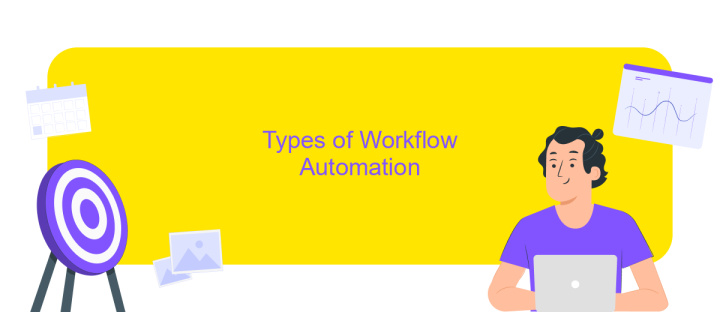Workflow Automation Explain
Workflow automation is revolutionizing the way businesses operate by streamlining processes, reducing manual tasks, and enhancing productivity. This technology enables organizations to automate repetitive tasks, ensuring consistency and accuracy while freeing up valuable human resources for more strategic activities. In this article, we'll explore the fundamentals of workflow automation, its benefits, and how it can transform your business operations.
Introduction to Workflow Automation
Workflow automation is the process of automating repeatable business tasks, minimizing the need for human intervention. It streamlines processes, reduces errors, and increases efficiency, allowing employees to focus on more strategic activities. By integrating various software applications, workflow automation can create a seamless flow of information and tasks across different departments.
- Improved efficiency and productivity
- Reduced operational costs
- Enhanced accuracy and consistency
- Better compliance and audit trails
- Increased employee satisfaction
Tools like ApiX-Drive facilitate workflow automation by enabling easy integration between various applications without the need for coding skills. ApiX-Drive allows businesses to connect their existing software solutions, automate data transfers, and create custom workflows tailored to their specific needs. This results in a more cohesive and efficient operational environment, driving overall business success.
Benefits of Workflow Automation

Workflow automation significantly enhances efficiency by streamlining repetitive tasks, allowing employees to focus on more strategic activities. By automating routine processes, businesses can reduce human error, ensure consistency, and expedite task completion. This leads to improved productivity and faster turnaround times, ultimately driving better overall performance and customer satisfaction.
Additionally, workflow automation facilitates seamless integration between various tools and platforms, creating a more cohesive and efficient work environment. Services like ApiX-Drive enable businesses to easily set up and manage integrations, ensuring that data flows smoothly across different systems. This not only saves time but also enhances data accuracy and accessibility, empowering teams to make more informed decisions and respond quickly to changing business needs.
Types of Workflow Automation

Workflow automation can significantly enhance the efficiency and accuracy of business processes. There are various types of workflow automation, each designed to address specific needs and challenges within an organization.
- Task Automation: This type involves automating repetitive tasks such as data entry, email responses, and routine approvals. Tools like ApiX-Drive can help integrate different applications, ensuring seamless data flow and reducing manual effort.
- Process Automation: This focuses on automating entire business processes, such as order processing or customer onboarding. By using workflow management systems, companies can streamline operations and improve consistency.
- Document Automation: Automating the creation, management, and distribution of documents can save time and reduce errors. This includes generating invoices, contracts, and reports automatically.
- Integration Automation: This involves connecting different software systems to work together without human intervention. ApiX-Drive is an excellent tool for setting up these integrations, enabling smooth data exchange between platforms.
By leveraging these types of workflow automation, businesses can achieve greater productivity, reduce errors, and free up valuable time for more strategic tasks. Implementing the right automation tools and services, such as ApiX-Drive, can make a significant difference in optimizing your workflows.
Tools and Technologies for Workflow Automation

Workflow automation has revolutionized the way businesses operate by streamlining repetitive tasks and improving efficiency. By leveraging various tools and technologies, organizations can automate complex workflows, reducing manual effort and minimizing errors.
There are numerous tools available that cater to different aspects of workflow automation. These tools can help integrate various applications, manage tasks, and automate processes across different departments.
- ApiX-Drive: A versatile tool for integrating multiple applications and automating data transfers between them.
- Zapier: Connects apps and automates workflows without coding.
- Microsoft Power Automate: Enables the automation of workflows between apps and services to synchronize files, get notifications, and collect data.
- Integromat: A powerful tool for connecting apps and automating workflows with advanced features.
Choosing the right tools and technologies for workflow automation depends on the specific needs of your organization. Tools like ApiX-Drive can simplify the integration process, allowing seamless data flow between different systems and enhancing overall productivity. By implementing these solutions, businesses can focus on more strategic tasks, driving growth and innovation.


Case Studies and Examples of Workflow Automation
One notable example of workflow automation is in the field of customer relationship management (CRM). Companies often use automated workflows to streamline their sales processes. For instance, when a new lead is entered into the CRM system, an automated workflow can assign the lead to a sales representative, schedule follow-up emails, and create tasks for the sales team. This not only saves time but also ensures that no lead is overlooked, increasing the chances of conversion.
Another case study involves the use of ApiX-Drive for integrating various business applications. For example, a company can use ApiX-Drive to automatically transfer data between their e-commerce platform and accounting software. This eliminates the need for manual data entry, reducing errors and freeing up valuable time for employees. By automating these routine tasks, businesses can focus more on strategic activities, thereby improving overall efficiency and productivity.
FAQ
What is workflow automation?
How can workflow automation benefit my business?
What types of tasks can be automated?
How do I get started with workflow automation?
Is workflow automation difficult to implement?
Apix-Drive is a simple and efficient system connector that will help you automate routine tasks and optimize business processes. You can save time and money, direct these resources to more important purposes. Test ApiX-Drive and make sure that this tool will relieve your employees and after 5 minutes of settings your business will start working faster.

